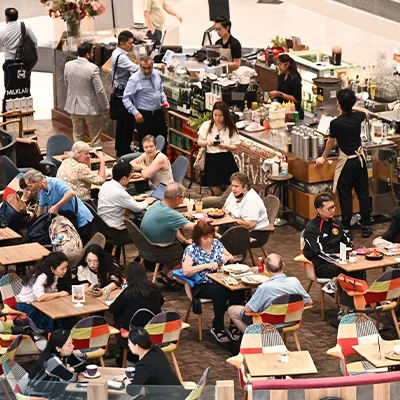Plans to remake Singapore announced at the National Day Rally 2019 stirred much excitement among the public. A highlight was the intention to reshape the Greater Southern Waterfront into a new, vibrant and thriving destination, where people can work near where they live, and live and play near where they work.
The Greater Southern Waterfront redevelopment project reflects Singapore's continued bid to lead the way in infusing smart infrastructure with current assets to create a "future city".
Future cities are ecosystems of people, business, buildings and infrastructure that leverage data and technology to become safer, more resilient, and better connected, leading to better lives for citizens. According to the ASEAN Smart Cities Framework, being a future city means ensuring a high quality of life for citizens, having a competitive economy and a sustainable environment.
Singapore has made notable progress in fulfilling these three strategic outcomes. Several accolades bear testimony to that. A Mercer poll of 231 cities in 2019 ranked Singapore highest in Asia-Pacific for quality of living.
It has also overtaken the US to become the world's most competitive economy, according to the 2019 World Economic Forum index, due to its investment in technological infrastructure and business-friendly policies.
In sustainability, Singapore is fourth globally in the Arcadis Sustainable Cities Index 2018, scoring highly in social mobility, management of energy use and economic performance.
However, Singapore cannot rest on its laurels. Growing urbanisation, coupled with limited land and natural resources, has been a perennial challenge for the country.
The expected increase in population to reach 6.9 million by 2030 means that the right infrastructure will be needed to handle higher demands for public services, energy and waste management.
Putting citizens and data at the centre
Data and technology hold the key to unlocking the solutions to infrastructural demand issues. Beyond that, putting citizens at the heart of problem-solving will help ensure that these solutions improve citizen satisfaction and trust.
The ability to harness technology and mesh rich data is important as it can inform essential public services decisions that have everyday implications. For example, the use of public sensors to collect more data on traffic and pedestrian patterns, and the analysis of such transport data to achieve modelling and forecasting capabilities, could help illuminate the fastest route for emergency services, such as facilitating ambulances to bring critically ill patients to the nearest hospital.
Furthermore, in a truly citizen-centric environment, if the data of that particular patient profile can be uploaded into a centralised healthcare patient record system, the hospital can make the necessary preparations before the patient arrives.
Similarly, the use of technology to collect data on air quality and street lighting, or implementing digital public transport payment facilities, intelligent traffic signals, and smart parking features will support citizens to move around the city more efficiently and conveniently and improve service levels and transparency.
Internationally, examples of cities bringing together smart technology and infrastructure to improve citizen experiences have taken off.
In Melbourne, for example, the city administration has used data and analytics to develop a geospatial transport network model that delivers real-time and predictive insights on the weather, transport network capacity and passenger travelling patterns to help optimise the transport network usage.
Dubai and Japan have also demonstrated the use of robotics in achieving long- and short-term objectives.
In Dubai, robots have been deployed for surveillance with the goal of replacing 25 per cent of its human police force with police robots by 2030.
In view of the upcoming Olympics in 2020, Japan has integrated robots into the urban society, using them to interact with the public and provide translation services to foreigners.
Singapore is not alone in adopting the "work-live-play" paradigm. The Hudson Yards project in New York and Miami Worldcenter project at Downtown Miami are examples of urban redevelopment projects where cities are pursuing similar ideals.
For instance, the Miami Worldcenter seeks to diversify urban land use by dramatically transforming 25 acres of land with a train system, convention centre, and residential and commercial spaces with a focus on interconnectivity.
Closer to home, urban planners in Bangkok, Manila and Kuala Lumpur are also exploring the link between railway networks and residential projects, reflecting an increased emphasis on creating connected life experiences.
To become a leading future city will require a combination of astute master-planning by policymakers and co-participation and co-execution by the private sector.
The government's initiative to transform the Greater Southern Waterfront presents the nation with an opportunity to accelerate its efforts in building a future tailored around citizens' needs.
Urban infrastructure aside, nurturing the "software" of a future city is also vital - and this is where every individual will need to play a part.
The writers are from EY. Sam Wong is EY Asean Government & Public Sector Leader, and Dominick Low, Senior Associate, Ernst & Young Advisory Pte Ltd.
The views in this article are the writers' and do not necessarily reflect the views of the global EY organisation or its member firms.
Copyright © 2019 Singapore Press Holdings
This article was written by Sam Wong from The Singapore Business Times and was legally licensed through the NewsCred publisher network. Please direct all licensing questions to legal@newscred.com.







